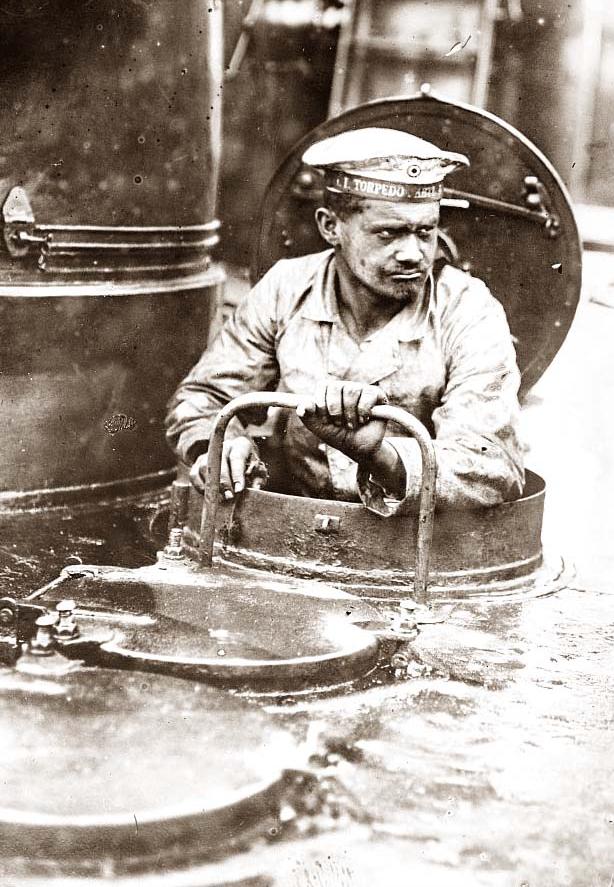
I am reading an excellent book called Iron Coffins, by Commander Herbert A. Werner, who served on five German u-boats between 1941 and 1945. Judging by this sailor’s uniform and the quality of the photo, I’d guess that this is WWI. But I liked it anyway and thought I should include it. In fact, there’s something “non-German” about the image that I cannot put my finger on, even though the site’s caption claims that it’s German.
What didn’t I know about u-boats? Mostly everything. For any reader with even a scant knowledge of boats and subs, none of this will be news–but it was news to me. Here are some things I’ve picked up so far:
- By 1944-45, the u-boat losses skyrocketed. I’m not quite sure I believe the chart in Iron Coffins, but here goes anyway: 600-700 boats lost during that period. Can anyone verify? That sounds huge.
- U-boats and subs in general do most of their operations top-side. They only go under when they absolutely need to be hidden.
- Amount of diesel fuel was sufficient to take them far into the North Atlantic and return, though fuel stops did sometimes happen.
- The goal was to rack up tonnage, not number of ships sunk. And certainly not number of men killed. Death was not the primary goal. In fact, they would usually send up an SOS call on an international frequency after they sunk a ship.
- Freighters were more valuable targets than military ships, though not always.
- They could dive within 45 seconds.
- Because of the angle of the dive, the stern would sometimes get hit by advancing enemy ships.